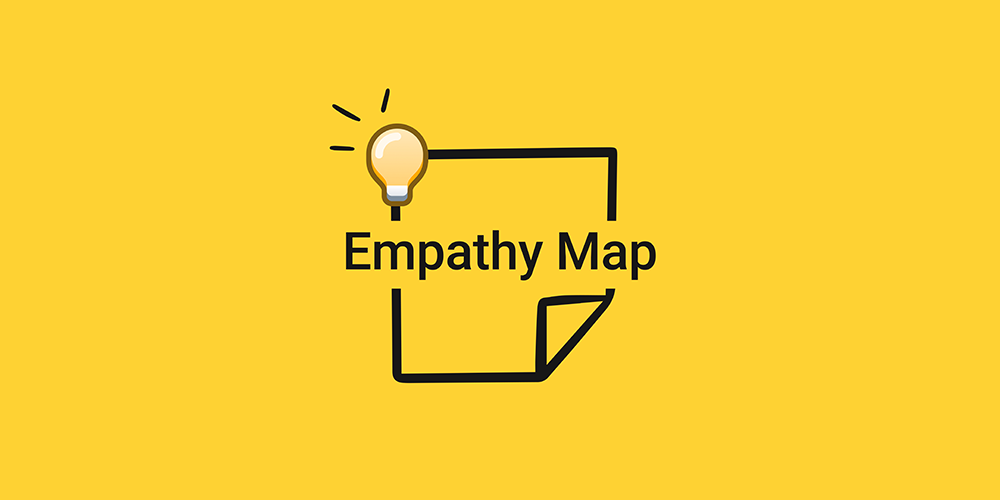Key Takeaways
- Empower Marketing Strategies with Emotional Insight: Uncover the potential of Empathy Maps to delve deep into customer emotions, transforming marketing from transactional to emotionally resonant.
- Craft Personalized Campaigns for Lasting Impact: Harness the power of customer personas to tailor content, emails, and social media campaigns, creating a personalized experience that drives engagement and loyalty.
- Navigate Future Trends with Empathy-Driven Innovation: Stay ahead in the marketing landscape by anticipating trends – from AI integration to immersive experiences – and leveraging empathy maps for a future-ready, consumer-centric approach.
In the ever-evolving landscape of digital marketing, staying attuned to the nuanced needs and preferences of your target audience is paramount for success.
As businesses strive to establish genuine connections with their customers, the integration of empathy into marketing strategies has become a game-changer.
Enter the transformative tool that is reshaping the way marketers understand and engage with their audience: the Empathy Map.
In this comprehensive guide, we’ll delve into the intricacies of Empathy Maps, unraveling their significance in the realm of marketing and providing you with actionable insights on how to leverage them effectively.

The Essence of Empathy in Marketing
At its core, empathy in marketing involves the ability to step into the shoes of your audience, to comprehend their motivations, aspirations, and challenges.
Empathy is not just a buzzword; it’s a dynamic force that bridges the gap between businesses and consumers, fostering a sense of understanding and connection.
However, translating empathy from a conceptual ideal into a tangible marketing strategy requires a structured approach – and that’s where the Empathy Map comes into play.
Unveiling the Empathy Map: A Holistic Overview
So, what exactly is an Empathy Map, and how can it revolutionize your marketing efforts?
Picture it as a visual roadmap that guides marketers through the intricate terrain of their target audience’s thoughts and emotions.
Comprising various components such as customer personas, observations, and emotional states, an Empathy Map serves as a compass, illuminating the nuanced aspects of your audience’s experiences.
In the upcoming sections, we’ll explore the anatomy of an Empathy Map, breaking down each element to demystify its role in constructing a comprehensive understanding of your customer base.
From identifying what your audience sees and hears to unraveling their deepest thoughts and emotions, an Empathy Map is a multifaceted tool designed to capture the essence of the customer journey.
Why You Need to Embrace Empathy Mapping
As we navigate through the guide, we’ll underscore the practical applications of Empathy Maps in shaping marketing strategies.
You’ll gain insights into how to craft compelling customer personas, glean actionable data, and seamlessly integrate empathy-driven approaches into your content and campaigns.
The journey doesn’t stop at understanding what an Empathy Map is; it extends into the realm of implementation and optimization.
Join us on this deep dive into the world of Empathy Maps – an exploration that transcends theoretical frameworks and equips you with the practical knowledge to resonate with your audience authentically.
Prepare to witness the transformation of your marketing initiatives as we unlock the secrets behind mastering the art of empathy in the digital age.
But, before we venture further, we like to share who we are and what we do.
About AppLabx
From developing a solid marketing plan to creating compelling content, optimizing for search engines, leveraging social media, and utilizing paid advertising, AppLabx offers a comprehensive suite of digital marketing services designed to drive growth and profitability for your business.
AppLabx is well known for helping companies and startups use empathy maps to drive web traffic to their websites and web apps.
At AppLabx, we understand that no two businesses are alike. That’s why we take a personalized approach to every project, working closely with our clients to understand their unique needs and goals, and developing customized strategies to help them achieve success.
If you need a digital consultation, then send in an inquiry here.
What is an Empathy Map and How to Use it for Marketing?
- Understanding Empathy Maps
- Creating an Empathy Map for Marketing
- Integrating Empathy Maps into Marketing Strategies
- Future Trends in Empathy-driven Marketing
1. Understanding Empathy Maps

Components of an Empathy Map
Customer Persona
Understanding the intricacies of your target audience begins with crafting detailed customer personas.
These personas are archetypal representations of your ideal customers, encapsulating demographic information, preferences, and pain points.
Seeing
The “Seeing” component of an Empathy Map involves observing the physical environment of your audience.
What are they exposed to on a daily basis?
This could include the websites they visit, the media they consume, or even the physical spaces they inhabit.
Understanding their visual stimuli allows you to align your marketing messages with what resonates most effectively. For instance, if your target audience is highly engaged on social media platforms, visual content might be a priority in your strategy.
Saying
The “Saying” section delves into the verbal aspects of your audience’s experience.
What phrases, expressions, or keywords do they use?
Social listening tools can be instrumental in uncovering the language your audience employs.
Utilizing these insights, you can tailor your messaging to align with their communication style. For instance, if your audience frequently uses colloquial language, incorporating conversational tones in your content can enhance relatability.
Doing
Understanding the actions your audience takes is pivotal for effective marketing. Analyzing data on their behaviours, such as online interactions, purchase patterns, or content consumption habits, provides a foundation for targeted campaigns.
Hearing
In the “Hearing” segment, the focus shifts to what your audience is exposed to aurally.
This could involve podcasts they listen to, music preferences, or even the tone of voice they find appealing.
Incorporating auditory elements into your marketing, such as podcast sponsorships or carefully curated playlists, can enhance engagement by appealing to their auditory senses.
Thinking
The “Thinking” aspect delves into your audience’s internal reflections and considerations.
What are their aspirations, fears, or motivations?
Conducting surveys or analyzing feedback can provide invaluable insights into the mindset of your audience.
For instance, if a significant portion of your audience expresses concerns about sustainability, aligning your brand with eco-friendly practices can resonate positively.
Feeling
Understanding the emotional landscape of your audience is perhaps the most crucial aspect of an Empathy Map.
Emotions drive decision-making, and brands that connect emotionally with consumers build lasting relationships.
A survey found that 82% of consumers with high emotional engagement would always buy the brand they are loyal to when making purchasing decisions.
The “Feeling” component helps marketers tap into these emotional triggers.
How Empathy Maps Help in Visualizing Customer Experience
Empathy Maps serve as powerful tools for visualizing the customer experience journey.
By synthesizing the data collected in each section, marketers can create a comprehensive visual representation that highlights the touchpoints where their audience interacts with their brand.
This visualization aids in identifying gaps or areas for improvement in the customer experience, allowing for targeted interventions.
Examples
Spotify
Spotify, the music streaming giant, utilizes Empathy Maps to enhance user experience.
By understanding users’ music preferences, creating personalized playlists, and recommending new tracks based on their listening history, Spotify has created a platform that resonates with individual users on a deeply personal level.
This approach has contributed to Spotify’s retention rates and user loyalty.
Airbnb
Airbnb employs Empathy Maps to connect with both hosts and guests. By empathizing with the needs and concerns of hosts, Airbnb tailors its communication to address their motivations for hosting.
Simultaneously, understanding the desires and fears of travelers enables Airbnb to enhance its platform to meet diverse expectations. This empathetic approach has fueled Airbnb’s global success and positive brand perception.
2. Creating an Empathy Map for Marketing

Researching and Understanding Your Audience
Analyzing Demographics
Begin by collecting and analyzing demographic data about your target audience.
Age, gender, location, income level, and other relevant factors will shape your understanding of who your customers are.
Conducting Surveys and Interviews
Actively engage with your audience through surveys and interviews to gather qualitative data.
Pose questions that unveil their preferences, pain points, and aspirations. This direct input provides invaluable insights into the mindset of your customers.
Defining Customer Personas
Creating Detailed Personas
Develop detailed customer personas based on the information gathered.
These personas should encapsulate not only demographic data but also psychographic elements, such as hobbies, values, and lifestyle choices.
Aligning Personas with Marketing Goals
Ensure that your customer personas align with your overarching marketing objectives.
This alignment facilitates targeted strategies tailored to resonate with specific segments of your audience.
Gathering Insights and Data
Utilizing Analytics Tools
Leverage analytics tools to gather quantitative data about customer behaviour.
Platforms like Google Analytics provide insights into website interactions, page views, and user journeys.
Social Listening for Qualitative Insights
Employ social listening tools to monitor online conversations and sentiment around your brand.
Understanding how your audience discusses your products or industry provides qualitative context to quantitative data.
Social networks are the top choice amongst internet users aged 16 to 34.
Filling in the Empathy Map Sections
Visualizing Customer Experiences
Populate the “Seeing,” “Saying,” “Doing,” “Hearing,” “Thinking,” and “Feeling” sections of your Empathy Map based on the insights gathered. Create a visual representation that encapsulates the diverse elements of your customer experience journey.
Tools and Resources for Crafting Effective Empathy Maps
Empathy Map Templates
Online Platforms and Design Tools
Explore online platforms and design tools that offer pre-designed Empathy Map templates. Tools like Canva and Miro provide user-friendly templates to streamline the mapping process.
Canva, a popular graphic design tool, reported in 2022 that they had more than 100 million people now using Canva each month.
Collaboration Platforms
Real-time Collaboration Tools
Utilize collaboration platforms that facilitate real-time interaction among team members. Google Workspace and Microsoft Teams enable seamless collaboration, ensuring that all stakeholders contribute to the development of comprehensive Empathy Maps.
As of 2021, Google Workspace has grown to more than 3 billion users globally.
Tips for Ensuring Accuracy and Relevance in Empathy Mapping
Regular Updates and Iterations
Dynamic Customer Landscapes
Acknowledge that customer preferences and behaviours evolve. Regularly update your Empathy Maps to reflect the dynamic nature of your audience.
Cross-Functional Collaboration
Breaking Silos
Foster collaboration across various departments, including marketing, sales, customer service, and product development. This cross-functional approach ensures a comprehensive understanding of the customer journey.
A study by Salesforce found that 73% of customers expect companies to understand their unique needs and expectations.
Data-Driven Validation
Analytics and Feedback Analysis
Validate assumptions made during empathy mapping with concrete data. Regularly analyze customer feedback, engagement metrics, and behavioural data to refine and validate your Empathy Maps.
3. Integrating Empathy Maps into Marketing Strategies
In an era where consumer expectations and preferences dictate marketing success, businesses are increasingly turning to innovative tools to understand and connect with their audience.
One such transformative tool, the Empathy Map, has emerged as a cornerstone in crafting empathetic and effective marketing strategies.
In this detailed exploration, we will delve into the seamless integration of Empathy Maps into marketing initiatives, examining the tangible benefits and providing actionable insights backed by data and real-world examples.

Tailoring Content Based on Empathy Map Insights
Personalizing Messaging for Targeted Impact
Crafting Tailored Content
Utilize the insights from your Empathy Map to craft content that resonates with specific audience segments.
Tailor your messaging to address the unique needs, preferences, and pain points identified in the “Seeing,” “Saying,” and “Feeling” sections.
Dynamic Email Campaigns
Implement dynamic content in email campaigns based on Empathy Map data. Personalized emails generate six times higher transaction rates and revenue per email than non-personalized emails.
Leveraging Visual Content Strategies
Visual Storytelling
Incorporate visual elements that align with the “Seeing” and “Hearing” components of your Empathy Map.
Video Marketing
Integrate video content into your marketing strategy, aligning with the preferences outlined in the “Seeing” and “Hearing” sections. 91% of businesses use video as a marketing tool – an all-time high since we started tracking this data and a significant jump from previous years.
Personalizing Marketing Campaigns
Segmenting Audiences for Targeted Campaigns
Segmentation based on Empathy Map Insights
Segment your audience according to the personas and preferences identified in your Empathy Map.
Marketers who use segmented campaigns can see as much as a 760% increase in revenue.
Social Media Campaigns
Utilize social media platforms to deliver personalized content based on Empathy Map insights. 54% of social media users use social media to research products.
Implementing Empathy in Customer Communications
Chatbot Integration
Integrate empathy-driven AI chatbots into your customer communication channels. These chatbots can respond to customers in a personalized manner, addressing concerns and queries based on the insights gathered from Empathy Maps.
Social Listening for Responsive Engagement
Employ social listening tools to monitor online conversations and engage with customers in real-time. Swift, empathetic responses to customer feedback contribute to positive brand perception.
40 per cent of consumers expect brands to respond within the first hour.
Improving Customer Communication Using Empathy Maps
Customer Journey Mapping
Seamless Omnichannel Experiences
Map the customer journey based on Empathy Map insights to ensure a seamless, empathetic omnichannel experience.
75% of consumers expect a consistent experience across every channel they choose to engage.
Addressing Pain Points
Identify and address pain points in the customer journey highlighted by the Empathy Map.
Resolving pain points can lead to increased customer satisfaction and loyalty.
Feedback Loops and Continuous Improvement
Gathering Feedback Aligned with Empathy Insights
Establish feedback loops that align with the elements of your Empathy Map.
Encourage customers to provide insights on their experiences, ensuring ongoing relevance and accuracy.
4. Future Trends in Empathy-driven Marketing
As the marketing landscape continues to evolve, the role of empathy in establishing meaningful connections with consumers has become increasingly crucial.
Looking ahead, the integration of empathy-driven strategies is set to undergo transformative shifts, influenced by emerging technologies, changing consumer expectations, and a deeper understanding of human behaviour.
In this exploration, we delve into the future trends that will shape the trajectory of empathy-driven marketing.

Emerging Technologies and Their Impact
Artificial Intelligence (AI) in Empathy-Driven Marketing
AI-Enhanced Personalization
The future of empathy-driven marketing lies in the advanced personalization capabilities of artificial intelligence.
AI algorithms can analyze vast amounts of data to understand individual preferences, allowing marketers to tailor experiences with unprecedented accuracy.
Chatbots Evolving into Virtual Companions
Chatbots are evolving beyond mere transactional interactions, becoming virtual companions that engage users in empathetic conversations. This shift is driven by advancements in natural language processing and sentiment analysis.
Virtual and Augmented Reality (VR/AR) for Immersive Experiences
Immersive Product Experiences
VR and AR technologies will enable brands to create immersive product experiences, allowing consumers to virtually interact with products before making a purchase.
This immersive approach taps into the emotional aspect of shopping.
Augmented and Virtual Reality Market is expected to reach 114.5 billion by 2027.
Empathy-Driven Storytelling in VR
VR platforms will become mediums for empathy-driven storytelling.
Brands can transport users to environments that evoke specific emotions, fostering a deeper connection between the consumer and the brand.
Evolving Consumer Expectations
Demand for Authenticity and Transparency
Transparent Supply Chains
Consumers will increasingly demand transparency in the supply chain, expecting brands to share the ethical and environmental considerations behind their products.
Brands that align with values related to sustainability and ethical practices will build stronger connections with empathetic consumers.
Storytelling that Reflects Real Experiences
Authentic storytelling will take centre stage, focusing on real experiences and relatable narratives. Brands that embrace authenticity in their messaging will resonate more deeply with consumers.
Hyper-Personalization and Privacy Concerns
Balancing Hyper-Personalization and Privacy
As personalization becomes more sophisticated, consumers will place a premium on the protection of their privacy.
Striking the right balance between hyper-personalization and respecting privacy will be crucial for brands.
Permission-Based Data Usage
Future trends indicate a shift towards permission-based data usage, where consumers have more control over how their data is utilized.
Brands that prioritize transparent and consensual data practices will build trust.
Continuous Improvement in Marketing Strategies through Empathy
Data-Driven Insights and Agile Marketing
Real-Time Analytics for Rapid Adaptation
The future of empathy-driven marketing involves leveraging real-time analytics for rapid adaptation.
Marketers will use data-driven insights to make informed decisions and adjust strategies on the fly based on evolving consumer sentiments.
Agile Marketing Teams
Agile marketing methodologies will become standard, allowing teams to respond swiftly to market changes and consumer feedback.
This iterative approach ensures that marketing strategies stay aligned with shifting empathetic landscapes.
Marketing teams who choose agile are 3 times more likely to grow their market share.
Integration of Emotional Intelligence in AI
Emotionally Intelligent AI Interactions
Future AI systems will integrate emotional intelligence, enabling more nuanced and empathetic interactions.
AI algorithms will not only understand what users say but also interpret the emotional context, leading to more authentic and human-like engagements.
Training AI with Emotional Data
AI algorithms will be trained with emotional data to recognize and respond to a wider spectrum of human emotions.
This training will enable AI systems to provide more empathetic and tailored responses.
Conclusion
In the dynamic realm of marketing, where consumer connections reign supreme, the incorporation of empathy-driven strategies has emerged as a game-changer.
In this comprehensive exploration of “What is an Empathy Map and How to Use it for Marketing,” we have delved into the intricacies of this powerful tool and unravelled its potential to revolutionize marketing endeavours.
Empathy Maps as a Cornerstone for Customer-Centric Marketing
Empathy maps, with their multifaceted insights into the customer psyche, serve as a cornerstone for crafting customer-centric marketing strategies.
As we’ve journeyed through the various components of an empathy map – from understanding customer personas and observing their environment to deciphering their language and emotions – the depth of information garnered becomes evident.
It is this depth that allows marketers to transcend traditional approaches and create campaigns that resonate on a profoundly human level.
Realizing the Impact: Connecting Data with Emotional Intelligence
The integration of data and emotional intelligence becomes a pivotal catalyst for success in the marketing landscape. Understanding the nuances of customer behaviour, preferences, and emotions empowers marketers to move beyond generic messaging.
The statistics affirm the efficacy of such an approach – brands that prioritize personalized content witness a substantial increase in conversion rates, with consumers showing a preference for experiences tailored to their unique needs.
Empathy Maps as Dynamic Tools in an Ever-Changing Landscape
The journey through empathy mapping doesn’t conclude with its creation; rather, it is an ongoing, dynamic process.
The evolving nature of consumer preferences necessitates continuous updates and refinements to ensure that marketing strategies stay attuned to the pulse of the audience.
As we’ve seen, regular research, cross-functional collaboration, and data-driven validation form the bedrock of accurate and relevant empathy maps.
Future Horizons: Anticipating Trends in Empathy-Driven Marketing
As we peer into the future, the integration of emerging technologies, such as AI, VR, and AR, promises to elevate empathy-driven marketing to unprecedented heights.
The data-driven insights derived from these technologies will enable marketers to tailor experiences with unparalleled precision.
Moreover, the emphasis on authenticity, privacy considerations, and the integration of emotional intelligence into AI systems will define the future landscape of marketing.
Closing Thoughts: Transforming Insights into Impact
In essence, the journey from understanding what an empathy map is to mastering its application in marketing is a transformative one. Empathy maps are not merely static documents; they are living tools that breathe life into marketing strategies.
The ability to walk in the shoes of consumers, to understand their aspirations, fears, and desires, is a superpower that empowers marketers to craft experiences that go beyond transactions and forge lasting connections.
In a world where consumers are inundated with information, brands that authentically connect with their audience, empathizing with their unique journeys, will stand out.
Empathy maps are the compass guiding marketers through this intricate landscape, helping them decipher the emotional language of their customers and respond with campaigns that resonate at a deeply human level.
As we embark on this journey of empathy-driven marketing, armed with the insights and strategies gleaned from empathy maps, the path ahead is one of meaningful connections, impactful campaigns, and enduring brand-consumer relationships.
In the ever-evolving landscape of marketing, empathy is not just a tool; it is the heartbeat that fuels lasting success.
If you are looking for a top-class digital marketer, then book a free consultation slot here.
If you find this article useful, why not share it with your friends and business partners, and also leave a nice comment below?
We, at the AppLabx Research Team, strive to bring the latest and most meaningful data, guides, and statistics to your doorstep.
To get access to top-quality guides, click over to the AppLabx Blog.
People also ask
How do you use an empathy map in marketing?
To use an empathy map in marketing, first, gather insights on your audience’s thoughts, feelings, and behaviors. Populate the map’s sections (Seeing, Saying, Doing, Hearing, Thinking, Feeling) with data. Use this visual tool to craft targeted, emotionally resonant campaigns and enhance overall customer engagement.
What is an empathy map and how is it used?
An empathy map is a visual tool to understand and empathize with your target audience. It includes sections like Seeing, Saying, Doing, Hearing, Thinking, and Feeling. Marketers use it to gain insights, create customer personas, and tailor strategies that resonate emotionally for more impactful campaigns.
Are empathy maps used to create a market segment?
Yes, empathy maps play a crucial role in creating market segments. By understanding customer emotions, behaviours, and preferences, marketers can delineate distinct segments, allowing for more targeted and effective strategies that resonate with specific audience needs and aspirations.


































